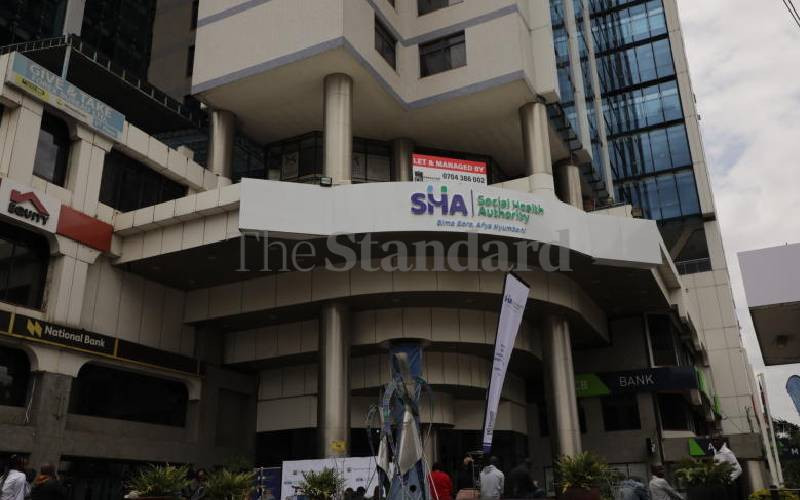In early 2015, the County Government of Nairobi passed the Regularisation of Development Bill 2015. The Act provided for the regularisation of all unauthorised developments by November 10, 2016. To ensure that this exercise has full legal backing, it was later enacted in March 2016 to enhance development compliance and order within the city.
Amongst its key provisions, developers who had built homes without approvals were given a grace period to seek regularisation permits, failure to which enforcement action would ensue. Upon regularisation, developers will have requisite documents that include occupation licence, which they can use for further development of their investments.
Later in October the same year, I spearheaded the issuance of 112 approved building plans to developers of Lucky Summer Estate in Pipeline, Embakasi. I had previously endorsed the 112 plans through the regularisation process in an event that was attended by developers and several political leaders as part of the approximately 1,000 developments in Lucky Summer scheduled for regularisation.
Regularisation of structures has been rolled out across the city, targeting critical areas that require urgent attention. More than 50,000 buildings in the county have not been approved yet they are occupied. A number of buildings, mainly in Eastlands and Pipeline areas, were constructed without approvals as owners had share certificates instead of title deeds.
A majority of these owners bought land from land-buying companies that issued share certificates as proof of ownership yet the legal requirement is a title deed before prospective developers' plans can be approved and a development permit issued.
Given these development variables, the county government will take this exercise very seriously in order to forestall adverse effects associated with disorderly urban development processes. A legal framework to guide the forensic audit for buildings in the capital with the objective of enhancing public safety and order of the urban built environment has already been put in place.
This is a bold move by the county government after successful piloting of the regularisation process in selected estates of the city. Under the programme, unauthorised structures will be subjected to both basic and forensic (scientific) audit process on case-by-case basis.
In case of building structures not approved, the county government will evaluate whether it meets minimum habitable standards, including structural integrity.
Further to that, if you bought land in which sub-division was never approved by the county, you will be required to bring the development scheme-plan to check if it meets basic planning standards; roads, storm-water drainage, utility way-leaves, open spaces, street lighting etcetera. We have set up a fully functional Regularisation Centre at the Lady Northey, State House avenue road. Some developers have positively taken advantage of the centre and initiative, which will close on June 30, 2017 and engaged the Nairobi City County Government planning team in the regularization process.
County officers from the Planning and Lands department are on hand to assist fast-track the processing and issuance of titles at Ardhi House to genuine plot owners.
We also take cognisance that the regularisation process has provided a platform to engage developers and associated players in a more proactive manner as opposed to the precious reactive way of dealing with unauthorised developments in the city.
In fact, developers have been allowed to engage private consortia to lead the auditing of building structures for sustainability of human habitation while the county plays the regulatory role. This has enhanced trust and confidence of developers in our officers.
Building structures that pass the test are regularised while those that fall below the minimum acceptable criteria will have their owners address the structural defects that will have been identified. However, those found to be beyond rehabilitation will be subjected to enforcement action, including condemnation and demolition.
So far, tangible results have been realised in places like Lucky Summer estate in Pipeline area, where about 25 per cent of the structures have been regularised following an MoU between the county and Lucky Summer Welfare Association.
Others are Embakasi Ranching, NASRA 1 and 2, Kamuthi Farmers Co-operative Society, Lumumba drive estate in Roysambu, Kiambu, Dandora, Njiru, Githunguri and Tassia 1 and 2.
Stay informed. Subscribe to our newsletter
In addition to the 25 per cent already regularised building structures, about 5,000 building plans, which represent 10 per cent of targeted structures, have already been submitted for evaluation and will be granted regularisation approval.
The regularisation exercise might have started off at a slow pace but the City County Government has put in place measures, including budgetary allocation, to speed up the process, besides full use of our online web portal.
Everyone needs to play their role as provided by law. We have also recently demolished a number of buildings in Kahawa West and Huruma that were found unsafe for occupation.
Let’s continue working together to secure our city development. We are indeed making Nairobians' lives better by ensuring that our buildings become safer.
 The Standard Group Plc is a
multi-media organization with investments in media platforms spanning newspaper
print operations, television, radio broadcasting, digital and online services. The
Standard Group is recognized as a leading multi-media house in Kenya with a key
influence in matters of national and international interest.
The Standard Group Plc is a
multi-media organization with investments in media platforms spanning newspaper
print operations, television, radio broadcasting, digital and online services. The
Standard Group is recognized as a leading multi-media house in Kenya with a key
influence in matters of national and international interest.
 The Standard Group Plc is a
multi-media organization with investments in media platforms spanning newspaper
print operations, television, radio broadcasting, digital and online services. The
Standard Group is recognized as a leading multi-media house in Kenya with a key
influence in matters of national and international interest.
The Standard Group Plc is a
multi-media organization with investments in media platforms spanning newspaper
print operations, television, radio broadcasting, digital and online services. The
Standard Group is recognized as a leading multi-media house in Kenya with a key
influence in matters of national and international interest.










